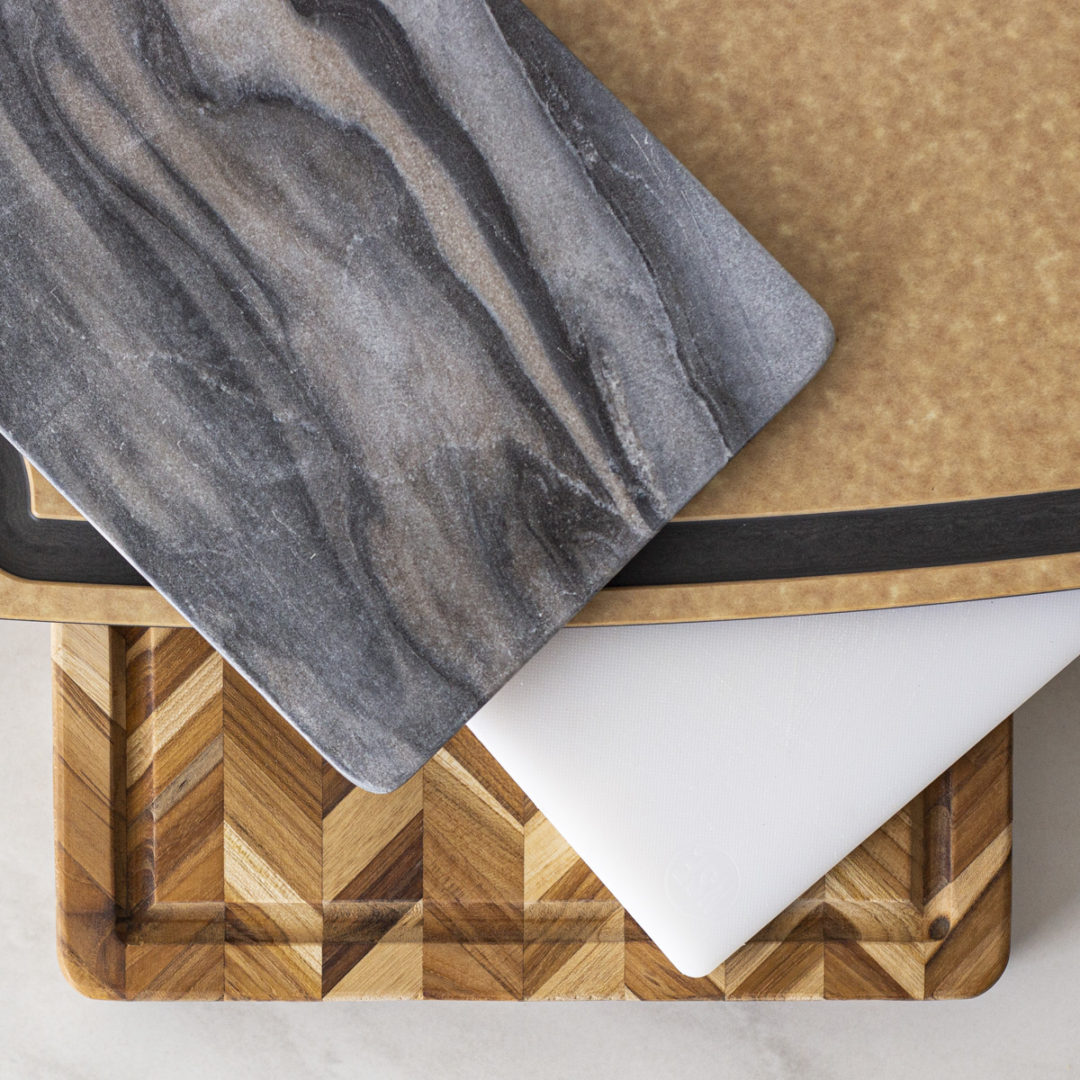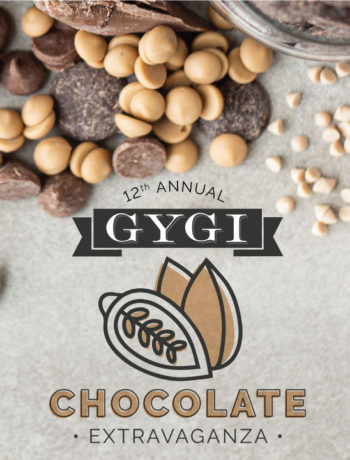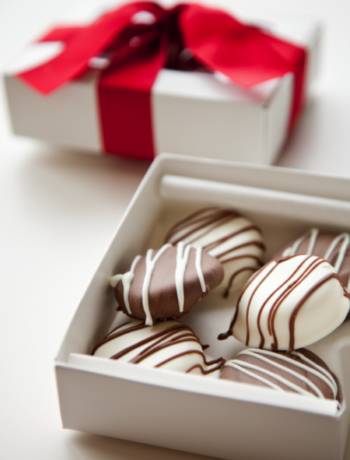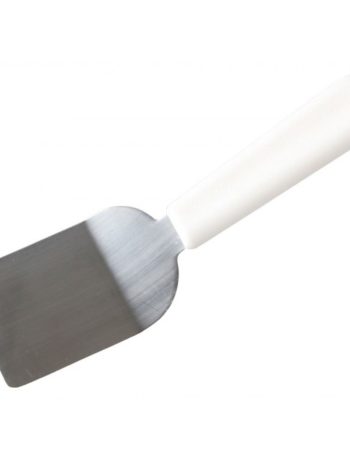Chopping, mincing, slicing, dicing, julienning… there are so many different knife cuts! Oftentimes, a recipe will call for lots of vegetables cut numerous ways. This can be very time-consuming and tedious. The flimsy, 8×10”, plastic cutting board that you’ve had in your cupboard for years doesn’t stand a chance. There simply isn’t enough room to chop everything, let alone a single vegetable.
Cutting boards are a necessary kitchen item. They protect your knives and countertops, provide a nice space for meal prep, help limit the mess made from preparing food, and can even be used as a serving platter or trivet for hot dishes. Some types of cutting boards are better for chopping and preparing food than others. Other boards may be labeled as a “cutting board” but are capable of damaging your knives. There are so many different types of cutting boards and they all have a specific purpose in the kitchen. The most popular material options for cutting boards include wood, polycarbonate and flexible plastic, and stone. Let’s see which cutting board fits in your kitchen best.
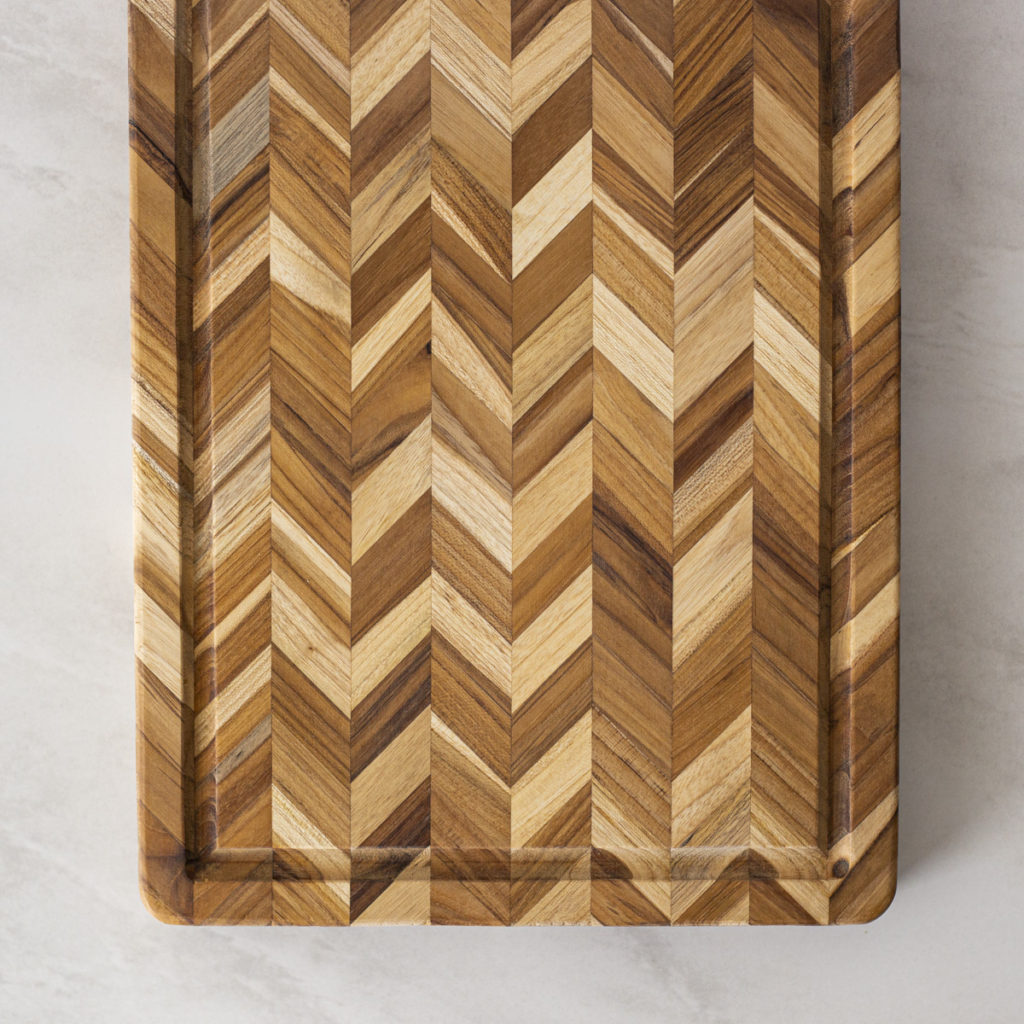
Wooden Cutting Boards
Wood is soft enough to not dull your knives but is still hard enough to handle the sharp blades of a knife. Wood is actually extremely durable. It can ‘self-heal’ and repair the lines left by knives after use. This gives the chopping board longevity. Many people have fears about cutting and preparing meat on wooden cutting boards. But because of wood’s self-healing properties, it prevents bacteria and germs from entering the wood making it naturally antimicrobial. Wood is still porous. When preparing meat and other high-moisture foods, don’t let them sit on the cutting board’s surface too long. If the liquid pools, it can absorb into the wood. Wood’s absorbency means it holds onto odors and stains if not treated and cleaned regularly. Check out this post for information about cleaning and maintaining your wooden cutting board.
When looking for a wooden cutting board you might want to take into account the wood grain, known as the direction, size, and surface appearance of a cutting board’s wood cell fibers. There are two main options that you’ll see in almost every type of wood: end-grain and edge-grain options. End-grain is made up of short, vertical ends of wood and, when fused together, have a checkerboard pattern. Edge-grain is made of long edge pieces of wood resulting in long, pretty lines. Both are fantastic choices. The most important thing when looking at the wood grain of a cutting board is that it is a “closed grain” cutting board, meaning that the surface is smooth and there are no obvious open pores visible. This helps the wood heal better and not absorb as many stains and odors. Another thing to look for in a wooden cutting board is thickness. The thicker the board, the better it holds its natural oils. A thicker board is less prone to splitting compared to a thinner board.
Different Types of Wooden Cutting Boards
Maple: The industry standard. Maple is one of the most popular types of cutting boards. It is excellent for daily use and doesn’t wear on your knives. It is a dense wood with a tight closed grain which makes it effective for blocking bacteria.
Walnut: Considered a soft, closed-grain wood, walnut is easy on knives. Its softness makes it prone to scratching, but its dark hue masks stains. Walnut is pretty to look at (swoon) and fairly durable considering its softer grain.
Teak: Teak has an extremely tight closed grain and is resistant to warping and mold. Plus, stains are less likely to show on its darker brown surface. It is very hard and will dull your knives more quickly than other wooden boards. Teak wood originates from Southeast Asia, which is a very humid climate. Teak requires much more maintenance in drier environments (hi, Utah!) and tends to dry out quickly.
Cherry: This redwood is the softest wood you can get, meaning that it will not damage your knives. This does make the surface susceptible to scratches and dents. Cherry has a lighter color which makes it more likely to stain. However, with a gentle hand, this cutting board can last a long time if properly cared for.
Bamboo: One of the newest cutting board options available is bamboo. Bamboo technically isn’t wood. It’s actually a hard grass. Although it is durable, lightweight, and cheap, it isn’t as gentle on knives as other woods. It also is prone to splitting in dry environments, like Utah, which means it requires more maintenance.
Wood requires a little bit more maintenance but is 100% worth the effort! If taken care of regularly, wooden cutting boards can last for years, if not, decades.
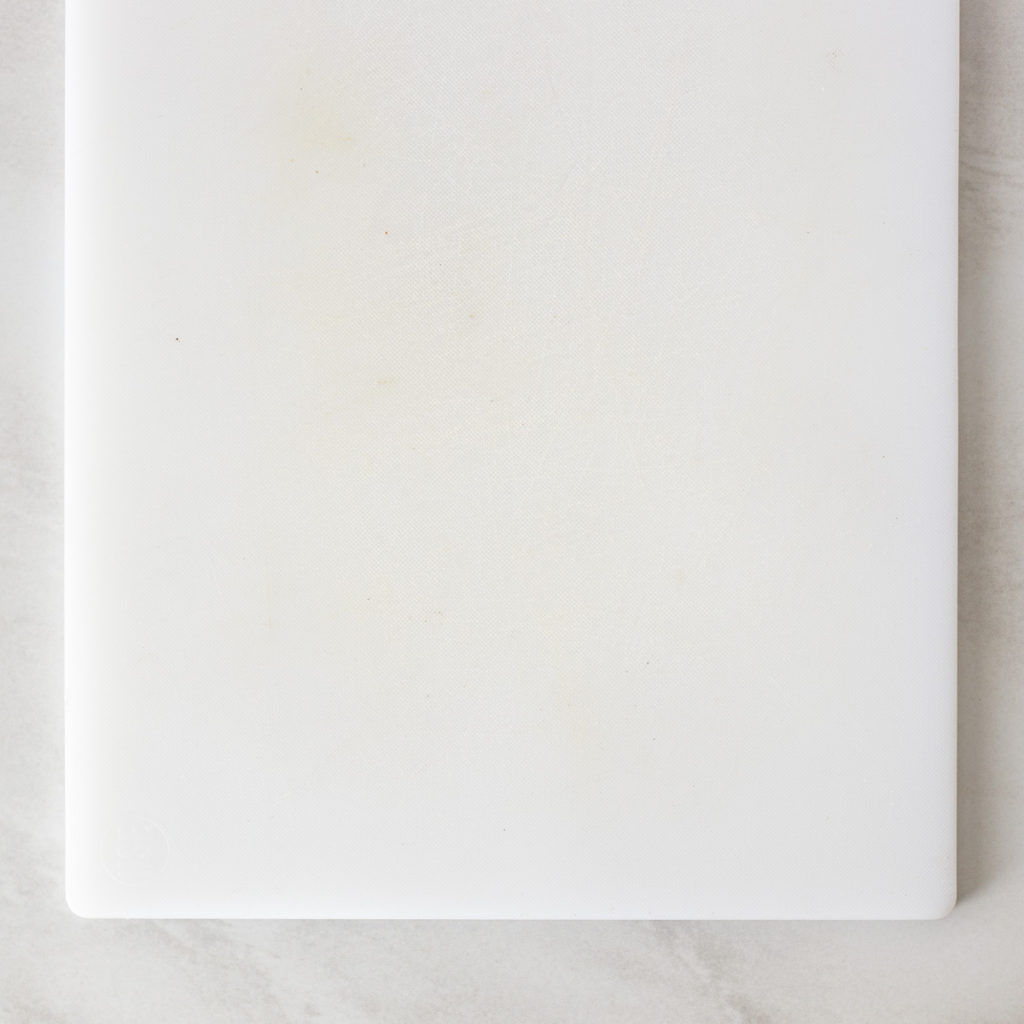
Polycarbonate & Plastic
These boards can do it all. They’re great for chopping anything from fruit and vegetables to meat. They are durable and sturdy. They don’t dull your knives quickly and they’re easy to care for. Oftentimes, you can buy these types of cutting boards for less than $15, which makes them easy on the wallet. However, the biggest downside to plastic and polycarbonate boards is that they don’t self-heal the same way wood does. That means once a knife makes a dent or scratch, it is there forever. This opens the surface to bacteria and the crevices can hold onto liquids and stains. This makes it so you have to replace your cutting boards more frequently, which can in turn be more expensive over time.
Some of these boards are dishwasher safe, but many aren’t. Check the product’s packaging before putting it in the dishwasher. If unsure, handwash it to be safe. Although plastic boards won’t absorb odors and stains as wood does, they still require a bit of maintenance. If your plastic board has been used frequently and has lots of scratches and dents, sticking it straight in the dishwasher won’t get rid of the bacteria that hide in the crevices. You’ll have to scrub the cutting board with soap and water, then sanitize it with bleach to be safe. Plastic is lightweight, less expensive, and a great option when you need to chop a small amount of food quickly, but when it comes to heavy-duty prep we highly suggest a wooden board.
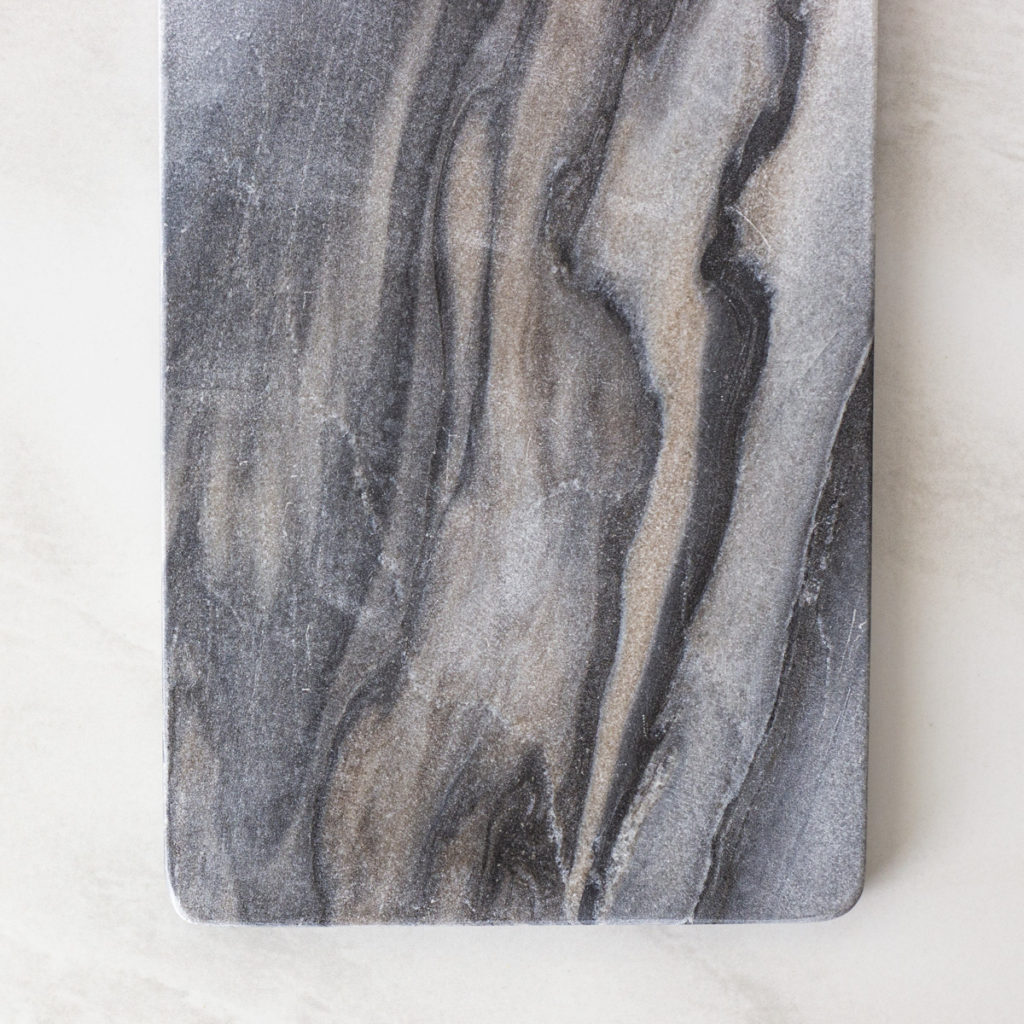
Stone and Glass
If there is one thing we want you to know about stone and glass cutting boards it is, “Please, don’t do it.” After buying a nice set of knives, the last thing we suggest is preparing and chopping your food on a stone cutting board. While these are beautiful and durable, they are better suited for serving. Stone will dull your knives and is often slippery when handling juicier foods (like tomatoes.) Stone and glass boards are beautiful, but use them as a serving platter rather than a cutting board to save your knives (and your hands) from damage.
Cutting boards are a kitchen necessity. They prolong the life of your knives, keep meal prep mess to a minimum, and can even serve as a statement piece in the kitchen. Each one of these boards has a place in the kitchen, but not all of them are kind to your knife blades. A cutting board will make food preparation much easier. Some cutting boards make preparing a large amount of food easier while others are great when all you need to do is cut up an apple. With proper care, whatever cutting board you use can last a long time.
Craving Something More?
Check out this post about the three kitchen knives you need in your kitchen.

